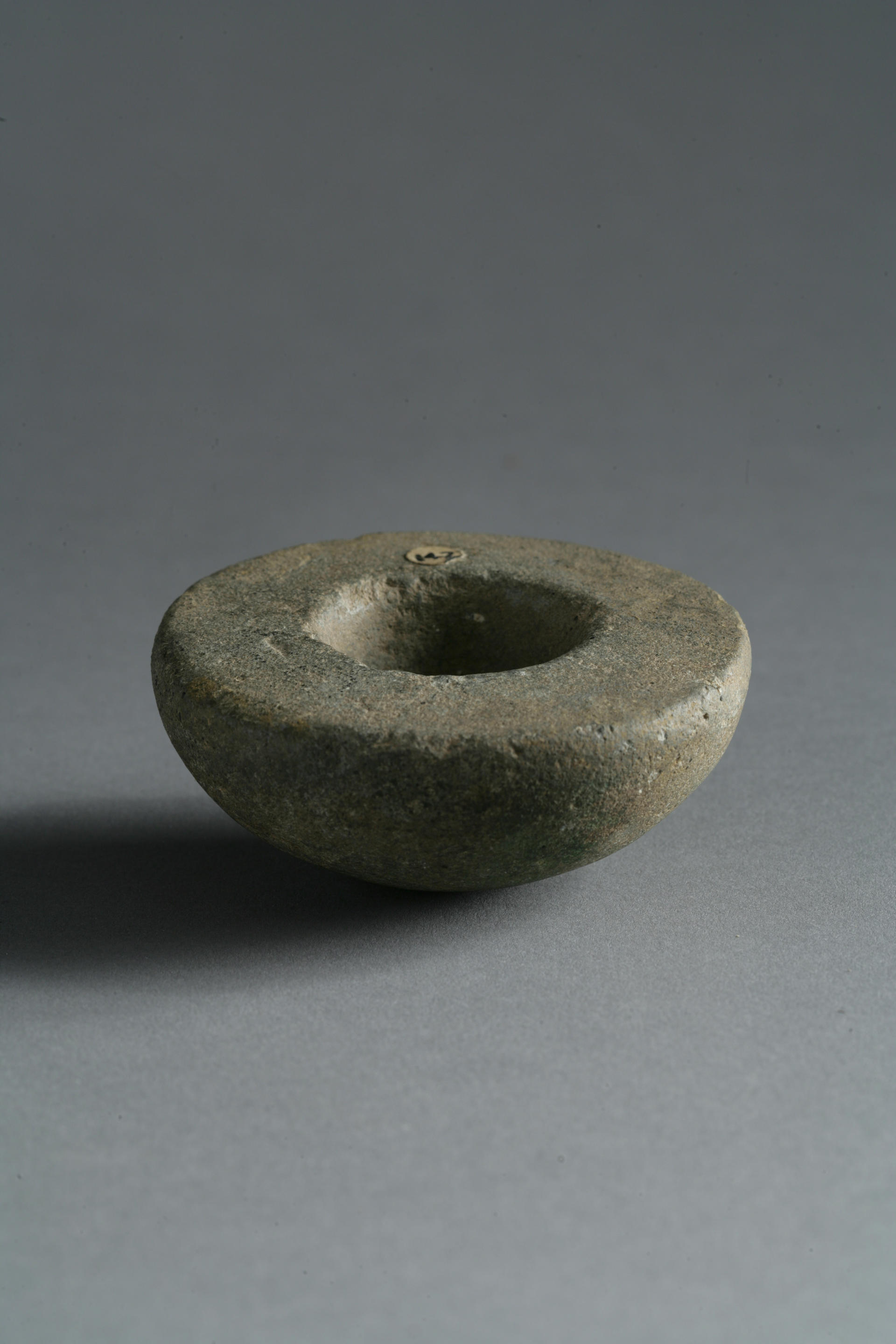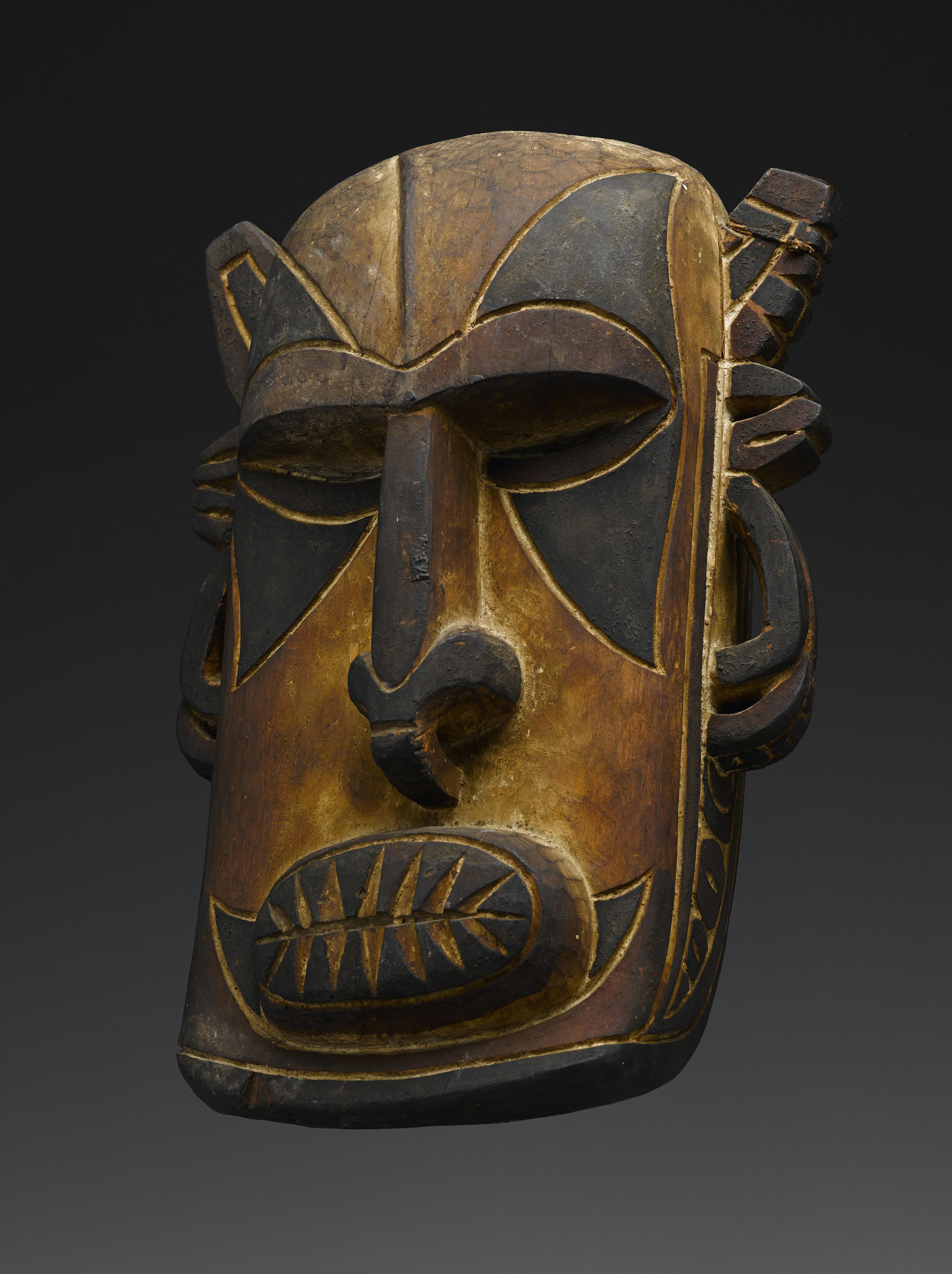A RARE HARD STONE CAMEO AND INTAGLIO BRACELET, FIRST HALF OF THE 19TH CENTURY Composed of a series of three hard stone cameos and four hard stone intaglios graduated in size from the centre, all mounted in gold Roman style mounts, length approximately 210mm. The central onyx cameo carved to depict the dextral profile of George IV, signed CAPVTI, by Giuseppe Caputi This portrait of George IV appears to have been executed late in the King's life as it shows the elderly George as in A.J.Stothard's Windsor Castle restoration medal of 1828, the year of his death, Cf: exhibition catalogue, Christopher Hartop et al., Royal Goldsmiths: the art of Rundell & Bridge 1797-1843, Koopman Rare Art 2005, fig 82. Although Benedetto Pistrucci was George's most prolific gem engraver and author of many of the more familiar cameo images executed for the Coronation in 1821, the royal demand was such that a number of other artists were also employed. The Roman gem engraver Giuseppe Caputi won a prize for an intaglio engraved with Theseus in 1833 and is recorded at via Ripetta 68 in the first half of the 19th Century. A J. Caputi, is however listed in London in 1815 as exhibiting a frame containing intaglios and cameos at the Royal Academy ( no. 833 ). The right set with a carved amethyst intaglio depicting a Muse, signed, L Pichler, in Greek letters, by Luigi Pichler 1773-1854, this gem is described in H. Rollett's catalogue raisonné of Pichlers' works, Die Drei Meister der Gymmoglyptik, Vienna, 1874, no. 149. An onyx cameo carved to depict the sinistral profile of Antonio Canova signed, Girometti, by Giuseppe Girometti 1780-1851, Girometti trained as a sculptor before becoming a successful gem engraver and medallist. Working for the Papal mint, his sources of inspiration varied from Antique models to the sculpture of Canova, Cf: Maestà di Roma, exhibition catalogue, Rome 2003, page 517. According to Forrer, he is known to have cut a portrait-medal of Canova during his time at the Mint. A carved carnelian intaglio depicting the sinistral profile of Ceres, signed Rega in Greek letters, by Filippo Rega Filippo Rega was born in Chieti on 26th August 1761. He was trained by the Pichlers between 1776 and 1787, and then moved to Naples where he became director of the Laboratorio della Pietre Dure di Napoli, an institution founded by Carlo di Borbone in 1738. The left set with a carved amethyst intaglio probably depicting the dextral profile of Sir Isaac Newton, signed, L Pichler, in Greek letters, by Luigi Pichler 1773-1854. Luigi Pichler was the son of Anton Pichler and half brother of Giovanni , who taught him to engrave gems. He is recorded as living and working in Vienna from 1808 becoming Professor of Medal and Gem Engraving at the Vienna Academy in 1818. He retired in 1850 to Rome, having survived the Poniatowski scandal in which he and his brother were among the celebrated modern gem-engravers implicated. A carved agate cameo depicting the standing profile of Perseus with a sword in one hand and the head of Medusa in the other, signed Pistrucci, by Benedetto Pistrucci 1784-1854. Benedetto Pistrucci first studied and worked in his native city of Rome before emigrating to London in 1815. There is a story, possibly apocryphal, that shortly after his arrival he was shown an example of his own earlier work by an English collector who insisted the gem was Antique because of the extraordinary quality of the work. By 1817 he had been employed by the royal mint, becoming Chief Medallist in 1828 despite opposition to his foreign origins. A carved citrine intaglio carved to depict the jugate dextral profiles of William III and Oliver Cromwell, symbolic of the Glorious Revolution 1688-9 and The English Civil Wars 1642-1649, together they brought constitutional government to England, Cf: Forrer, Vol. VII, under Brown, signed, W. Brown Fecit, by William Brown 1748-1825. William Brown and his younger brother Charles 1749-1795 worked in London exhibiting at the
A RARE HARD STONE CAMEO AND INTAGLIO BRACELET, FIRST HALF OF THE 19TH CENTURY Composed of a series of three hard stone cameos and four hard stone intaglios graduated in size from the centre, all mounted in gold Roman style mounts, length approximately 210mm. The central onyx cameo carved to depict the dextral profile of George IV, signed CAPVTI, by Giuseppe Caputi This portrait of George IV appears to have been executed late in the King's life as it shows the elderly George as in A.J.Stothard's Windsor Castle restoration medal of 1828, the year of his death, Cf: exhibition catalogue, Christopher Hartop et al., Royal Goldsmiths: the art of Rundell & Bridge 1797-1843, Koopman Rare Art 2005, fig 82. Although Benedetto Pistrucci was George's most prolific gem engraver and author of many of the more familiar cameo images executed for the Coronation in 1821, the royal demand was such that a number of other artists were also employed. The Roman gem engraver Giuseppe Caputi won a prize for an intaglio engraved with Theseus in 1833 and is recorded at via Ripetta 68 in the first half of the 19th Century. A J. Caputi, is however listed in London in 1815 as exhibiting a frame containing intaglios and cameos at the Royal Academy ( no. 833 ). The right set with a carved amethyst intaglio depicting a Muse, signed, L Pichler, in Greek letters, by Luigi Pichler 1773-1854, this gem is described in H. Rollett's catalogue raisonné of Pichlers' works, Die Drei Meister der Gymmoglyptik, Vienna, 1874, no. 149. An onyx cameo carved to depict the sinistral profile of Antonio Canova signed, Girometti, by Giuseppe Girometti 1780-1851, Girometti trained as a sculptor before becoming a successful gem engraver and medallist. Working for the Papal mint, his sources of inspiration varied from Antique models to the sculpture of Canova, Cf: Maestà di Roma, exhibition catalogue, Rome 2003, page 517. According to Forrer, he is known to have cut a portrait-medal of Canova during his time at the Mint. A carved carnelian intaglio depicting the sinistral profile of Ceres, signed Rega in Greek letters, by Filippo Rega Filippo Rega was born in Chieti on 26th August 1761. He was trained by the Pichlers between 1776 and 1787, and then moved to Naples where he became director of the Laboratorio della Pietre Dure di Napoli, an institution founded by Carlo di Borbone in 1738. The left set with a carved amethyst intaglio probably depicting the dextral profile of Sir Isaac Newton, signed, L Pichler, in Greek letters, by Luigi Pichler 1773-1854. Luigi Pichler was the son of Anton Pichler and half brother of Giovanni , who taught him to engrave gems. He is recorded as living and working in Vienna from 1808 becoming Professor of Medal and Gem Engraving at the Vienna Academy in 1818. He retired in 1850 to Rome, having survived the Poniatowski scandal in which he and his brother were among the celebrated modern gem-engravers implicated. A carved agate cameo depicting the standing profile of Perseus with a sword in one hand and the head of Medusa in the other, signed Pistrucci, by Benedetto Pistrucci 1784-1854. Benedetto Pistrucci first studied and worked in his native city of Rome before emigrating to London in 1815. There is a story, possibly apocryphal, that shortly after his arrival he was shown an example of his own earlier work by an English collector who insisted the gem was Antique because of the extraordinary quality of the work. By 1817 he had been employed by the royal mint, becoming Chief Medallist in 1828 despite opposition to his foreign origins. A carved citrine intaglio carved to depict the jugate dextral profiles of William III and Oliver Cromwell, symbolic of the Glorious Revolution 1688-9 and The English Civil Wars 1642-1649, together they brought constitutional government to England, Cf: Forrer, Vol. VII, under Brown, signed, W. Brown Fecit, by William Brown 1748-1825. William Brown and his younger brother Charles 1749-1795 worked in London exhibiting at the
.jpg)
.jpg?w=400?width=1600&quality=70)
.jpg?w=400?width=1600&quality=70)
.jpg?w=400?width=1600&quality=70)
.jpg?w=400?width=1600&quality=70)


.jpg)







Testen Sie LotSearch und seine Premium-Features 7 Tage - ohne Kosten!
Lassen Sie sich automatisch über neue Objekte in kommenden Auktionen benachrichtigen.
Suchauftrag anlegen